Introduction
According to CJCJ (1999), diversion is an “attempt to divert, or channel out, youthful offenders from the juvenile justice system”.
This presentation will assess the New York State VS New York City diversion programs, compare and contrast them, as well as analyze trends and patterns related to them.
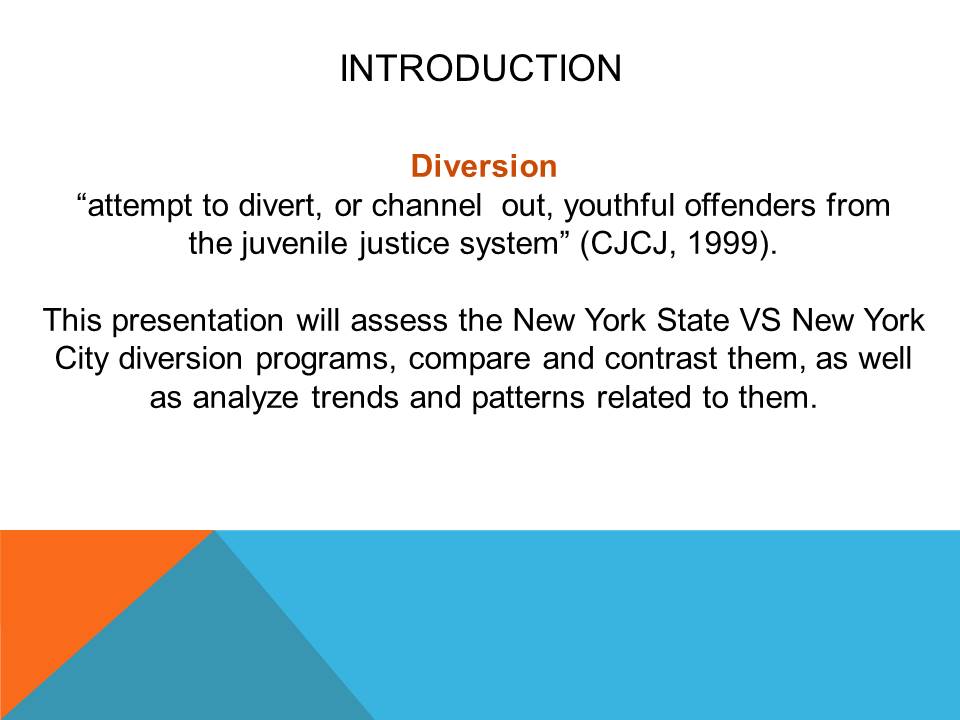
New York State Adolescent Diversion Program
Components (participants between 16 and 17 years-old)
The New York State Adolescent Diversion program caters to adolescents aged from 16 to 17 years old.
The program includes the following components:
- Initial arraignment.
- Assignment to a specialized court in case if the arraignment is unsuccessful.
- Clinical assessment.
- Counseling, treatment (mental health or drug), mediation within the family, community service (Crime Solutions, 2014).
- ADP programs participation.
Recidivism
According to Rempel, Lambson, Cadoret, and Franklin’s (2013) study, there was no evidence that the NY State program contributed to the increase of re-arrest and recidivism. Same rate in the 6-month follow-up period.
Overall effectiveness
- Preliminary results – promising;
- Public safety is enhanced and not compromised;
- Needs further improvements beyond the demonstration of the current studies.
Progress tracking
Compliance, community services progress, re-arrest variables, survival.
Measures
Demographics, criminal history, current charges, case disposition, sentences, recidivism, ADP eligibility (Rempel, Lambson, Cadoret, & Franklin, 2013).
Reintegration and Transition
- Attempts to redirect 16-17-old defenders from formal prosecution to increase the chances of successful reintegration.
- Addressing possible lifetime consequences (use of criminal records to employ, restrict access to education and housing).
- Raising awareness of 16-17 year-old being prosecuted as adults in NY State despite the nature of their crime.
Friends of Island Academy: Alternative to Incarceration is a New York City Diversion Program that consists of the following components:
- Personal interactions with incarcerated offenders;
- Flexible and personalized plans;
- Youth leadership programs, mentoring;
- Civic engagement, civic projects (Friends of Island Academy, 2015).
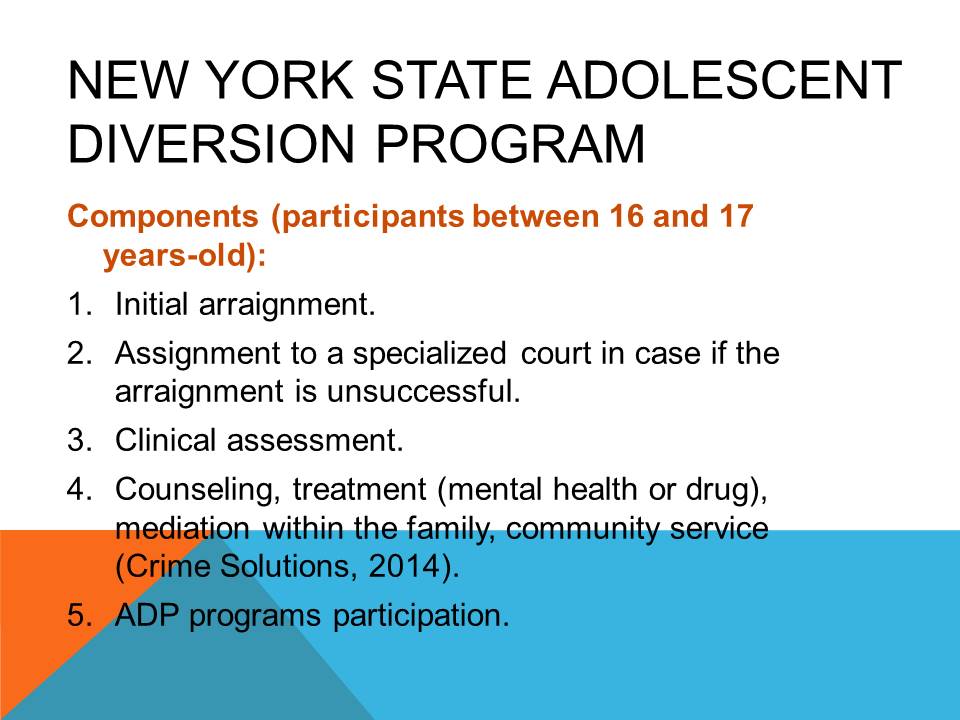
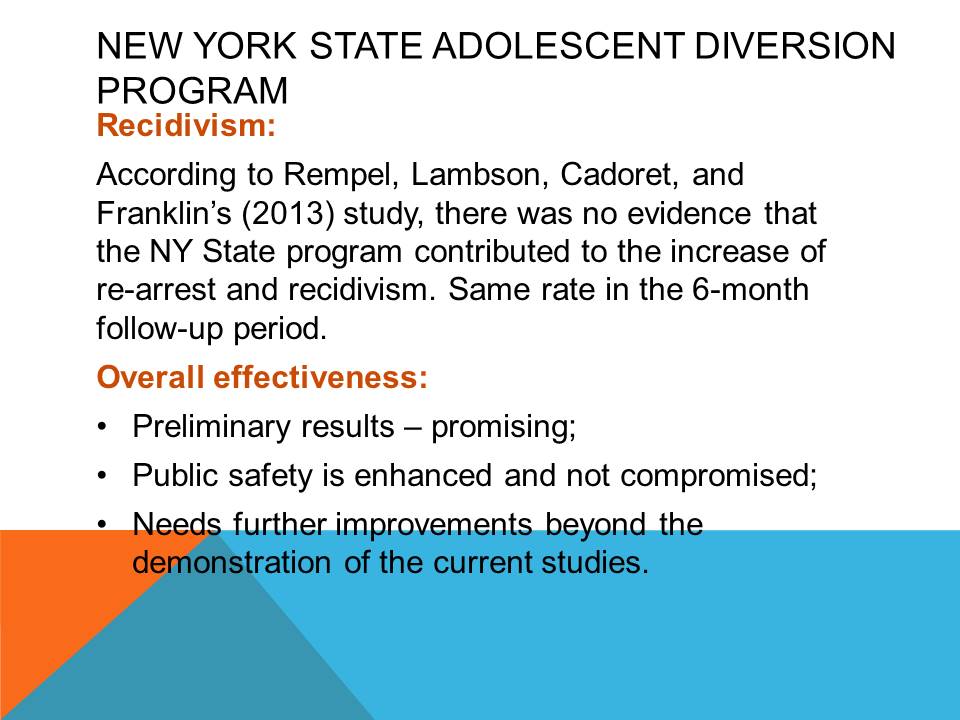
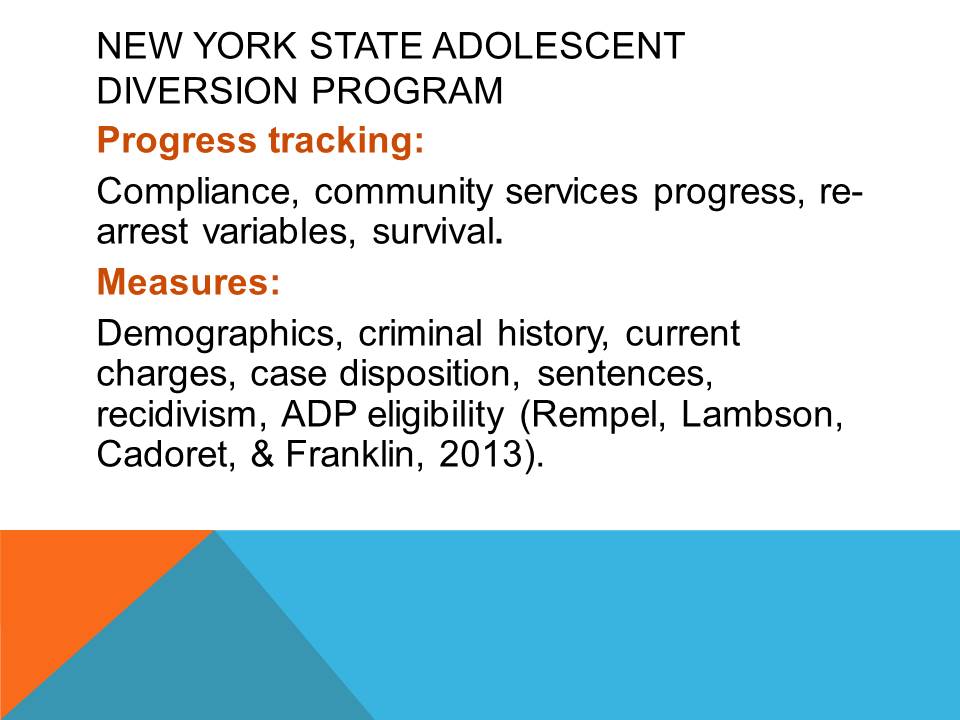
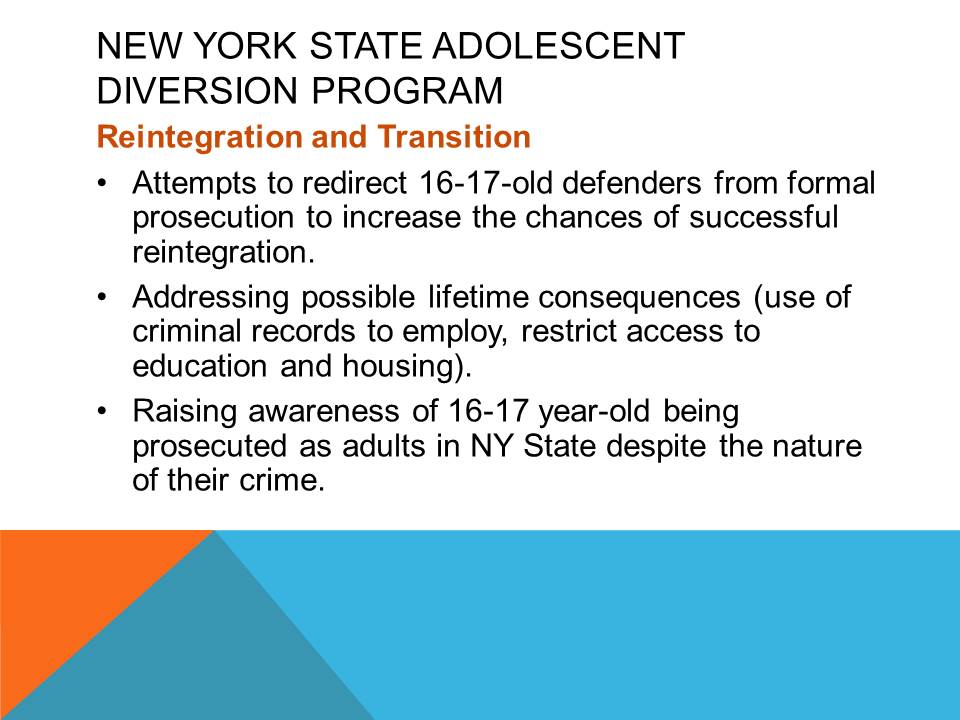
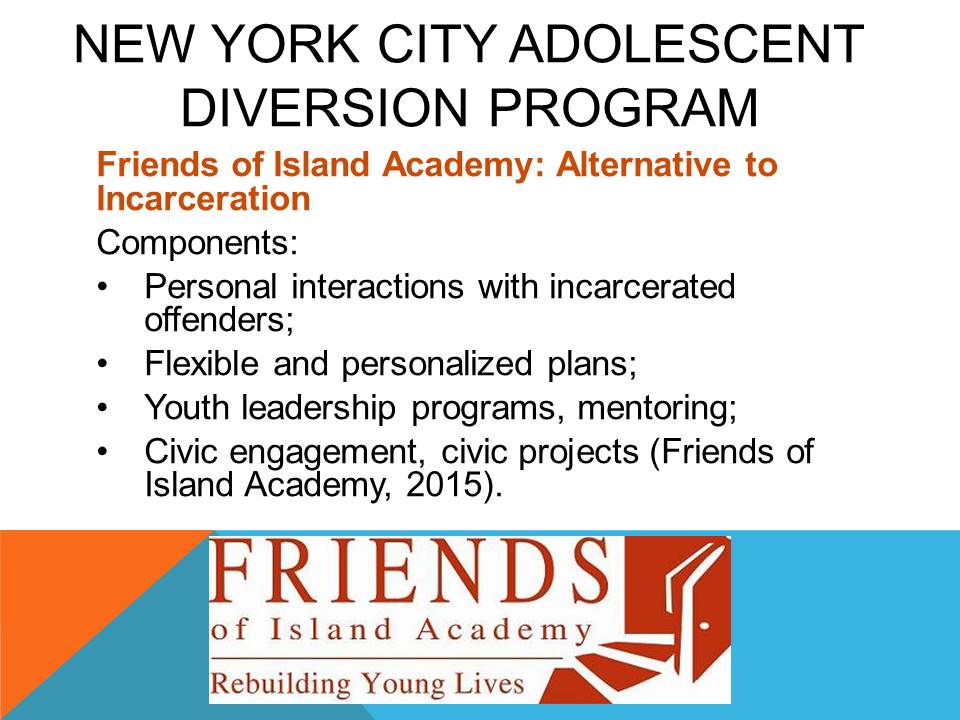
Friends of Island Academy: Alternative to Incarceration
Recidivism
Readmission rates of the program participants (9 months and more) – less than 20% compared with the overall city rate of 49% (Charting Impact, 2015).
Overall effectiveness
- Preliminary results – effective;
- Launch of the full-day high school;
- Launch of the High School Equivalency program and the Young Fathers program.
- Due to its effectiveness, the program needs expansion across all areas to help as many juvenile offenders as possible.
Progress tracking
Key performance areas: participant’s employment, health, education, overall well-being, leadership, and creativity (Charting Impact, 2015).
KPIs: graduations or accumulation of credit, jobs attainment and retention, acquisition of new skills, medical treatment referral, compliance with treatment, participation in vocational activities.
Re-arrest and readmissions tracking.
Reintegration and Transition
- The longer the participant’s engagement in the program, the more successful the transition and reintegration process is.
- Support throughout the entire transitioning process.
- Positive youth development for successful reintegration.
- Contribution to successful reintegration and transition through the establishment of youth programs (young fathers mentoring, High School Equivalency program, etc.) (Charting Impact, 2015).
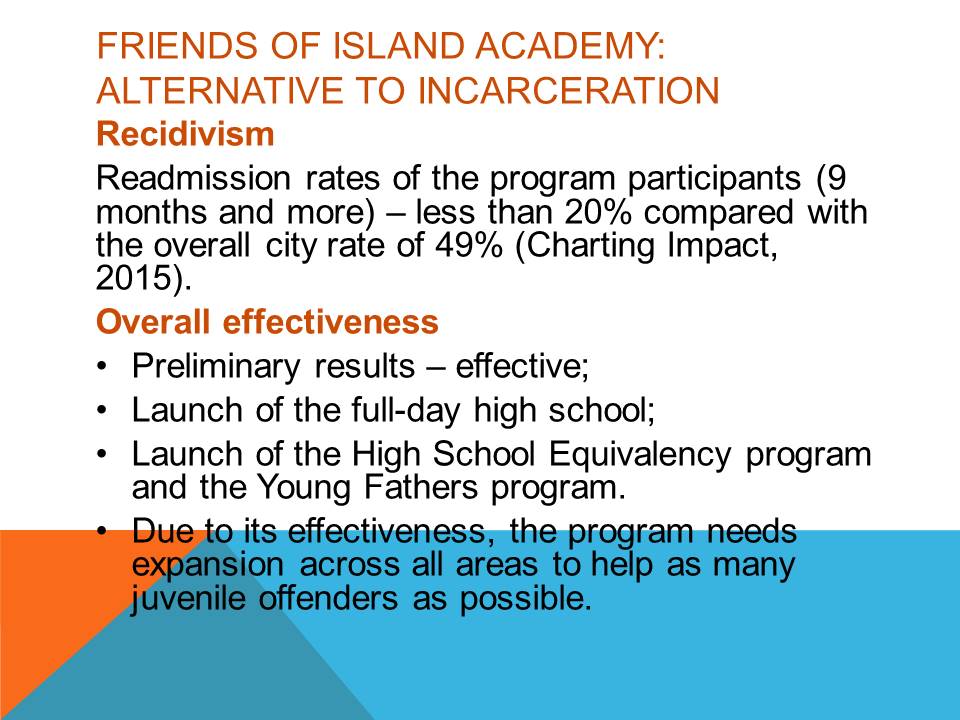
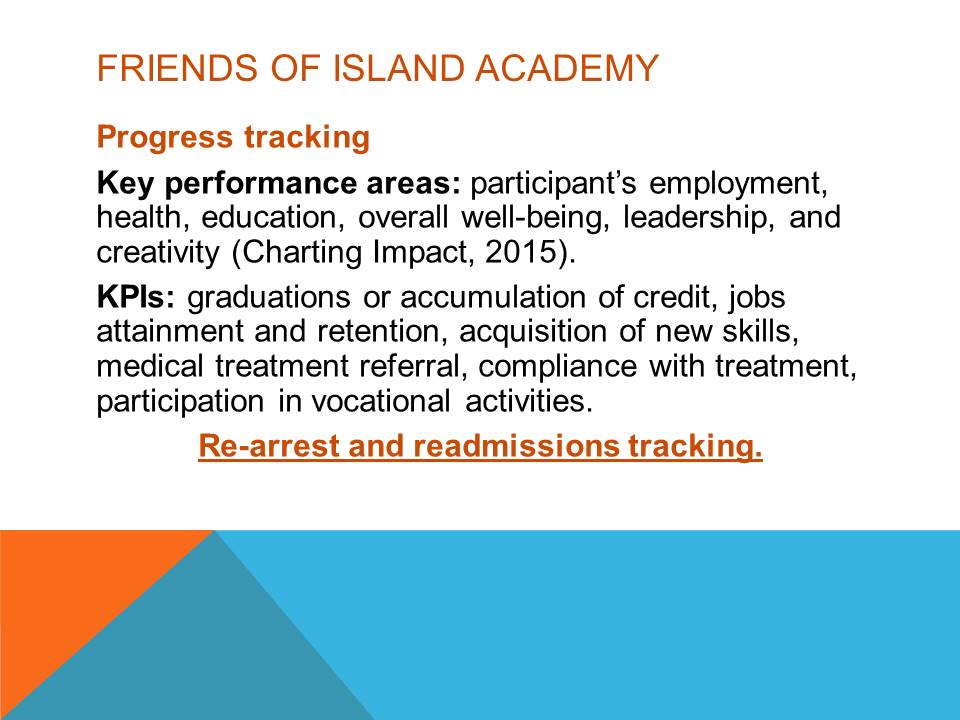
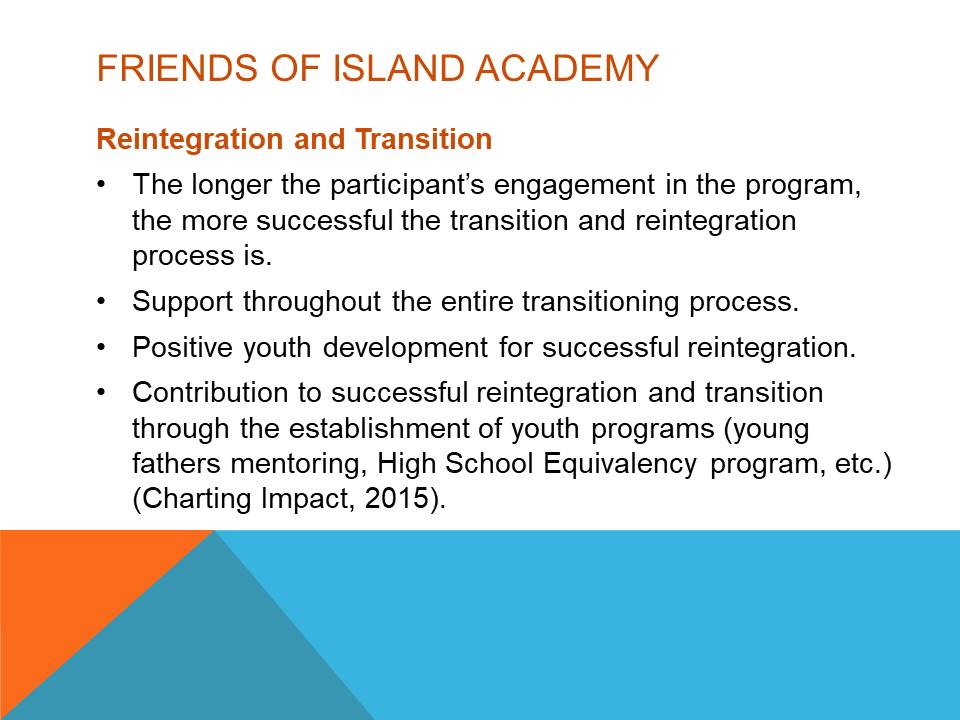
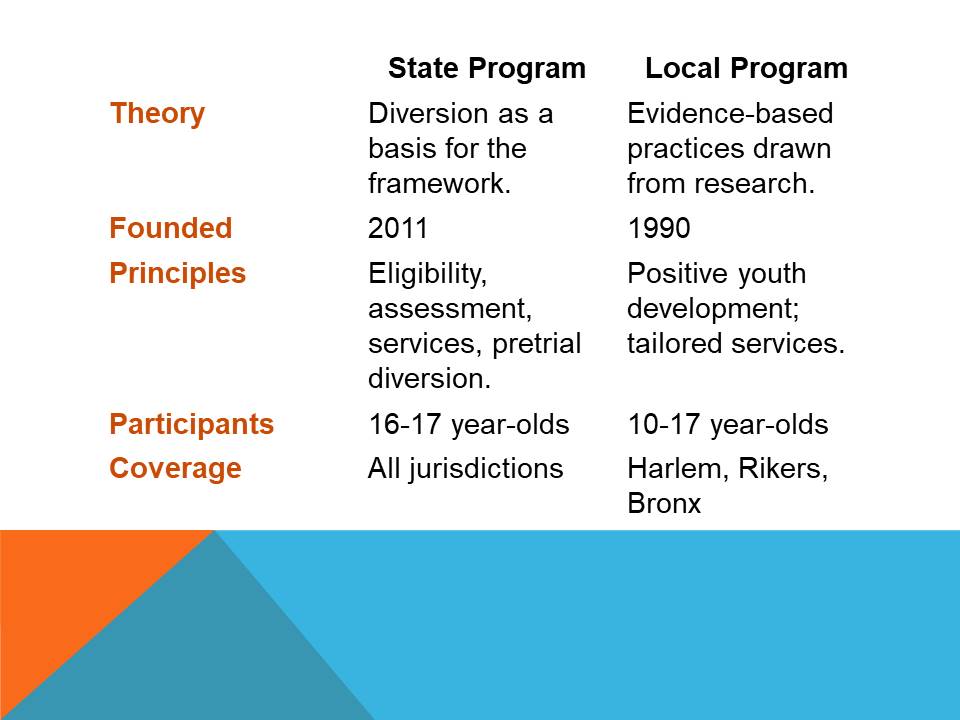
References
Charting Impact. (2015). FriendsofIslandAcademy, Inc. Web.
CJCJ. (1999).Diversionprograms: Anoverview. Web.
Crime Solutions. (2014). Program profile: Adolescent diversion program.Web.
Friends of Island Academy. (2015). Youth advocacy. Web.
Rempel, M., Lambson, S., Cadoret, C., & Franklin, A. (2013). The adolescent diversion program.Web.